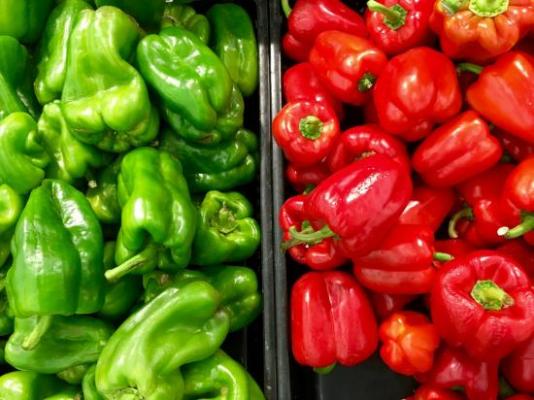Five Lesser Known Foods High in Pesticides
Our partner EWG bases its recommendations on data from the Department of Agriculture’s Pesticide Data Program and focuses on fresh fruits and vegetables, a major source of pesticide residues in our diets. EWG researchers also monitor the scientific literature on pesticides and commission laboratory testing of foods and pesticides not included in the USDA program to create its annual list of Clean 15 and Dirty Dozen Shoppers Guide to Pesticides in Produce.
These five foods below are runners up to the Dirty Dozen, so buying organic may be best, both in their unprocessed state and in products made with them:
1. Hot and sweet bell peppers
The Dirty Dozen PLUS™ list includes sweet bell peppers and hot peppers, both of which can carry residues of neurotoxic chemicals such as the organophosphate insecticides acephate and chlorpyrifos. EWG recommends that people who frequently eat these vegetables buy organic, especially if they’re feeding them to children. If you’re going to eat conventional peppers, because you can’t find or afford organic, make sure to cook them, because pesticide levels typically diminish when food is cooked.
2. Oats
Despite testing foods for more than 500 pesticides, the USDA tests do not include glyphosate, the most widely used pesticide in the U.S. Research by EWG and other advocacy groups has highlighted the pervasive contamination of our food supply with glyphosate, a chemical associated with an elevated risk of cancer. EWG’s own testing detected the toxic pesticide in more than 95 percent of the samples of oat-based products, including children’s cereals.
3. Beans and legumes
Like oats, beans and legumes are frequently sprayed with glyphosate right before harvest. Glyphosate has been reported in pinto beans and in chickpea products such as hummus. Testing by the Canadian Food Inspection Agency detected glyphosate in nearly half of bean, pea and lentil products tested in 2015 and 2016. To avoid glyphosate in these products, organic varieties are a good choice.
4. Herbs
In addition to fruits and vegetables, some herbs used in cooking, such as cilantro, can contain surprisingly high pesticide levels. For example, based on this year’s USDA data, the pesticide profile on cilantro is similar to that on spinach and kale, both of which are on the Dirty Dozen list.
As with kale, the most frequently detected pesticide on cilantro is DCPA, often sold under the brand name Dacthal, which is classified as a possible human carcinogen by the EPA and not approved for use in the European Union. Other concerning pesticides detected on cilantro include chlorpyrifos and pyrethroid insecticides.
5. Rice and wheat
A recent study in France found that children who consumed greater amounts of pasta, rice or semolina and breakfast cereals and whole grain bread had higher levels of metabolites of pyrethroid pesticides in their urine, compared to those who consumed less of these foods.
In 2018, USDA collected and tested 758 wheat flour and 189 rice samples and found 19 and 37 different pesticides on these commodities, respectively, including the neurotoxic pesticide chlorpyrifos and the pyrethroid insecticide deltamethrin. Rice samples also contained tricyclazole and propiconazole, two fungicides not approved in the EU. Washing and cooking rice can reduce some pesticide residues. Glyphosate is also present in wheat products, as testing by EWG and others has shown.





















